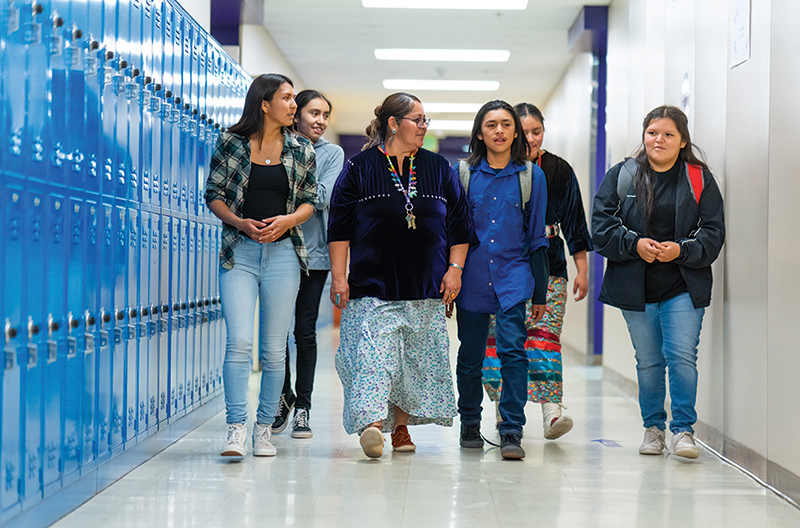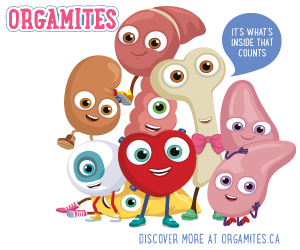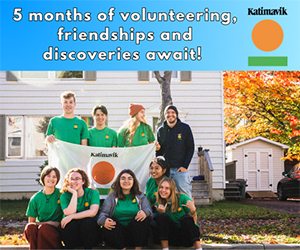Despite protracted appeals from First Nations, Metis, and Inuit people, it hasn’t been until recently that Canada’s national government and the greater public have accepted that historic policies, practices, and attitudes have been tantamount to cultural genocide.
Fortunately, efforts to eradicate the original occupants of Turtle Island have failed. However, the impact of these efforts has had long-term, intergenerational effects. It is no easy task for Indigenous people to navigate the legacy of The Indian Act, broken treaties, the reserve system, residential schools, the ‘60s scoop’, and the horrifying reality of murdered and missing Indigenous women and girls. These historic wrongs have destroyed many lives with Indigenous women bearing the brunt of this reality. Tragically, a lack of support for Indigenous women has seen many fall into lives involving drug abuse, sexual assault, sex trafficking, violence, and death.
Times are changing
Thankfully, times are changing. Canadians are accepting their shameful past and have begun facilitating efforts to improve the lives and livelihoods of Indigenous women—not exclusively out of guilt, but more because it’s the right thing to do. Certainly, the work of the Truth and Reconciliation Commission has helped raise awareness regarding the need for action. Currently, education has been a primary focus of reconciliation efforts with the Indigenous community, all levels of government, community organizations, and post-secondary institutions trying to do their part.
Why should we focus on Indigenous women?
The tragic legacy of Canada’s approach to Indigenous people has created a social structure that stacks the deck against First Nations, Metis, and Inuit people. Indigenous women are particularly prone to barriers to progress within society. This is reflected in the fact that Indigenous women are less likely to seek a higher education, more likely to be unemployed, more prone to poverty, and experience a higher incarceration rate than their non-Indigenous counterparts. This reality is not a reflection of the failings of Indigenous women; it is more a reflection of the mountain of challenges placed in front of these women. It will take generations to repair the damage done with current efforts at least addressing some of the problems that have been created.
What’s being done to help Indigenous women?
Fortunately, there is a lot being done to give Indigenous women as many opportunities and resources as possible to help them succeed. From Indigenous groups to various levels of government, programs are rolling out; Indigenous women just need to know where to look. Here are a few organizations that Guidance Counsellors should be aware of when helping their First Nations, Metis, and Inuit students.
Indspire – an Indigenous national charity, Indspire’s priority is the education of First Nations, Metis, and Inuit people. Their goal: to have every Indigenous person graduate within a generation. They hope to do this by breaking down barriers, offering financial support, and inspiring Indigenous people to achieve. Indspire offers a wealth of literature and programs aimed at helping all members of the Indigenous community. Much of this literature and many of these programs deal with social issues that directly affect women.
Native Women’s Association of Canada – primarily an advocacy group for Indigenous women, the NWAC looks to improve the lives of those they serve socially, economically, and politically. Some of the issues they focus on include labour and employment, violence prevention and safety, social justice, human rights, the environment, children’s education, and childcare. They also honour the leadership of the elders in their “Grandmother’s Lodge”—a group of women who “collectively recognize, respect, promote, defend, and enhance our Indigenous ancestral laws, spiritual beliefs, language, and Traditions provided by the Creator.”
Esquao Institute for the Advancement of Aboriginal Women—this Alberta non-profit organization provides resources and programming to advance the lives of Indigenous women. Esquao (a Cree word for woman) provides everything from mental health support to job training assistance.
National Aboriginal Capital Corporations Association—a network of over 50 Indigenous financial institutions, NACCA might not be an organization Indigenous high school students need right now, but they may be a group to turn to in the future. NACCA’s Indigenous Women’s Entrepreneur Program looks to promote and provide loans (up to $50,000) for First Nations, Metis, and Inuit women looking to start a business in Canada.
While all of these groups have the advancement of Indigenous women as a focal point of their mandate, Guidance Counsellors can work with their students to identify specific programs offered by each group that can help Indigenous students overcome barriers to their education and career path.
Scholarships and Bursaries
Beyond applying for funding within the communities to which they belong, Indigenous women can else earn scholarships and bursaries from major corporations and the schools that they attend. Here are just a few examples of these opportunities:
Indspire’s Building a Better Future Bursary and Scholarship Program—we return to this tremendous organization. Indspire has been giving out bursaries and scholarships since 1996 with close to 60,000 recipients accepting nearly $200 million in funding. Two things standout when it comes to Indspire’s Building a Better Future program: first, Indspire works with federal and provincial government partners as well as donors (which include individuals, post-secondary institutions, and businesses) to keep the fund robust; second, applicants fill out one application and Indspire distributes the funding and support accordingly. This makes the application process more streamlined and less cumbersome. Additionally, recipients are free to use what is given to them for anything from tuition to childcare to housing.
The Indigenous Bursaries Search Tool—the federal government hosts a search portal for over 500 Indigenous bursaries and scholarships offered from coast to coast to coast. Type in the word ‘women’ in the search engine and over a dozen bursaries and scholarships will pop up.
Other major scholarships
Indigenous women can also apply for several major scholarships offered by a variety of businesses and organizations. These include:
Horatio Alger Indigenous Achievement Scholarships—$50,000 split between five recipients.
Nelson Indigenous Scholarship—a $10,000 award.
Husky Energy Scholarship—five recipients can receive $20,000 over the course of their studies.
RBC Future Launch Scholarship for Indigenous Youth—twenty recipients can each receive up to $10,000.
Canada Post Awards for Indigenous Students—$2,000 a year for successful candidates.
Dreamcatcher Scholarship—for Indigenous students in Ontario.
Once again, Guidance Counsellors can work with their students to identify scholarships and bursaries that work best. They should also explore the scholarships and bursaries offered by the specific schools that students plan on attending.
Apprenticeships and the skilled trades
It’s no secret that the skilled trades are in desperate need of workers. Plenty of incentives have been offered by both federal and provincial governments looking to bolster the skilled labour workforce. Many of these incentives are aimed at moving the number of women in skilled trades up from a very low five percent of workers in a sector of the economy that is reporting a thirty percent shortage of tradespeople. In other words, the skilled trades need women! Combine the incentives put in place for women to enter the skilled trades workforce with efforts to get Indigenous women in particular to take on work in areas like construction, and it becomes clear that this is an area of the economy rife with opportunity for Indigenous women. Here’s a specific program that stands out:
National Women’s Association of Canada’s National Apprenticeship Program—working with close to 40 construction and manufacturing Red Seal trades, the NWAC has put together a convincing package to recruit Indigenous women into this sector of the economy. There program offers help to high school students, pre-apprenticeship trainees, and women hoping to retrain into a new job. They offer financial and social support resources for people in the apprenticeship program.
There are also apprenticeship programs offered by provincial governments and trade organizations that Indigenous women can apply for if they would like to pursue a career in the skilled trades.
Opportunities
These collective efforts are geared toward helping our Indigenous students become the women of hope and promise they aspire to be. Guidance counsellors are uniquely positioned to help their Indigenous students and, perhaps, with the information provided in a brief article like this, work with their students to dig deeper and expose even more opportunities.
The Indigenous community has been leading the charge in creating these opportunities with various levels of government, the business community, and education system responding to the example set by First Nations, Metis, and Inuit people. While the legacy of discrimination and suppression aimed at Indigenous women is far from being fully addressed, Canada seems to be on the road to reconciliation. A spirit of determination and persistence could see us make even greater strides.
By: Sean Dolan





